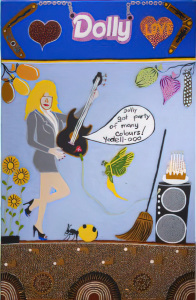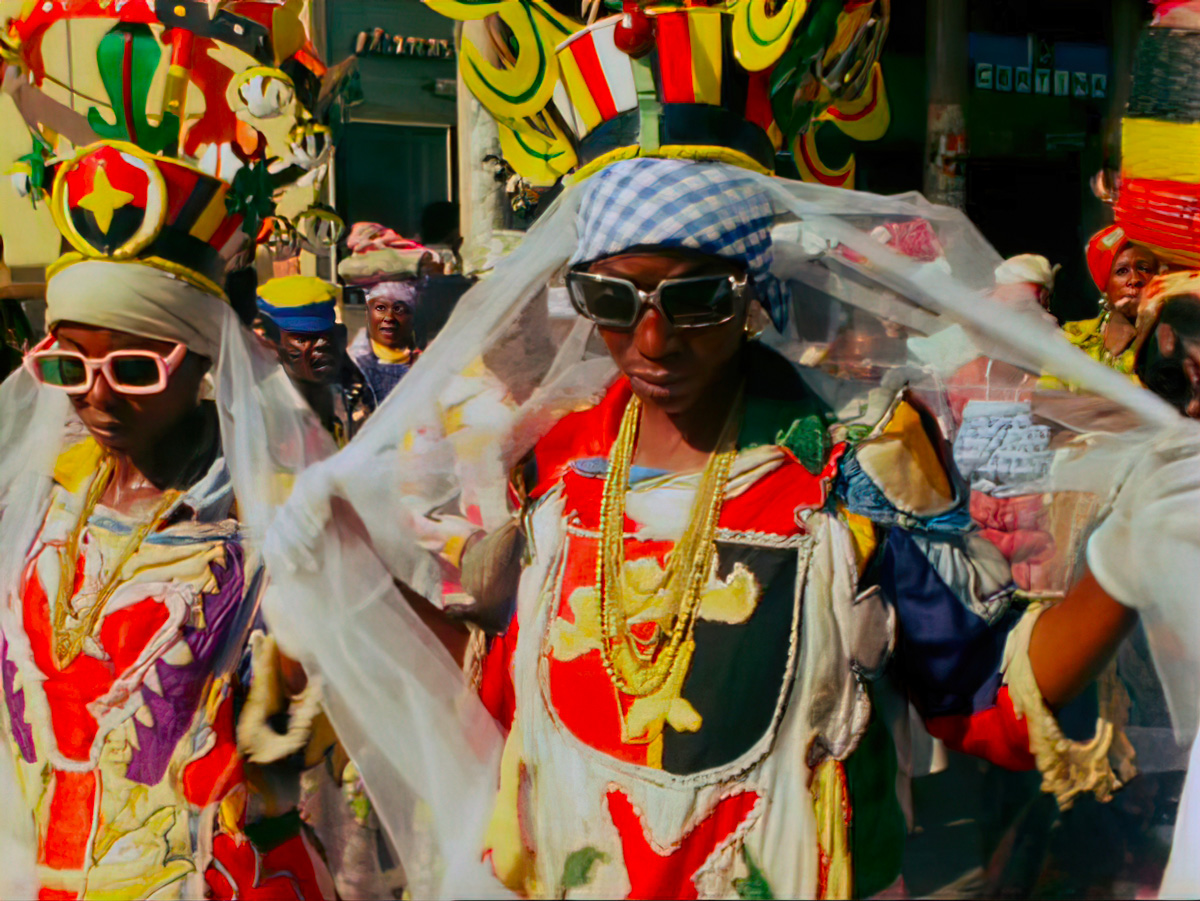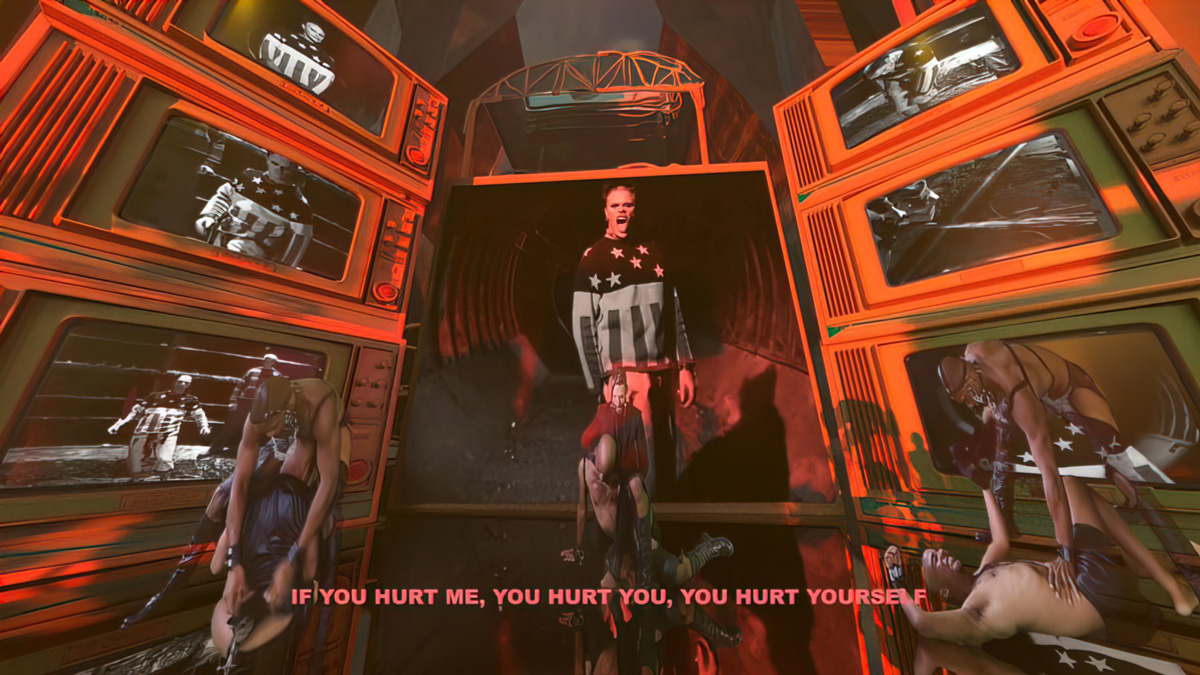ART-PRESENTATION:Sweat
 The group exhibition “Sweat” is the result of two years of intensive research. The show is dedicated to the phenomenon of bodies that act together and shape their present. Breaking a sweat in the face of violent attempts to control the human body represents an artistic strategy of resistance. The exhibition brings together more than twenty artistis that respond to several conditions of political pressure.
The group exhibition “Sweat” is the result of two years of intensive research. The show is dedicated to the phenomenon of bodies that act together and shape their present. Breaking a sweat in the face of violent attempts to control the human body represents an artistic strategy of resistance. The exhibition brings together more than twenty artistis that respond to several conditions of political pressure.
By Dimitris Lempesis
Photo: Haus der Kunst Archive

The artistic positions in the exhibition “Sweat” range from present day to pioneering works from the 1970s and ‘80s that mobilised feminist and postcolonial movements in art and society, opening up historical perspectives on artistic languages that are embedded in forms of radical social emancipation.. The artists make use of dynamic media such as dance, film, and video that attest to ephemeral civil choreographies and activate collaborative and archival processes, building on communities and their cultures. Through practices of non-hierarchical recycling, collaging, and sampling of collective and personal imagery, they postulate worlds as vital assemblages of multiple cultural influences and temporalities, disrupting biased mainstream narratives and representations. In his performance “Dancing Southward” (2016- ), Santiago Reyes dances his way across the city calling for an embodied shift of perspectives from dominant Western narratives. The only material trace of this movement is Reyes’s sweat-soaked T-shirt. Just as Reyes from time to time incorporates different urban spaces, and persistently resists a retreat into private space, sweat is a visible expression of life and transformation, as well as of confrontation and fear. With this central image of sweat, which permeates inside and outside, body and spirit, the exhibition brings together works by 30 international artists. These artists respond to the climate of exclusion, oppression, and repression directed at origin, culture, class, gender, and sexuality with dynamic acts of self-determination. With physical and sensual forms of expression such as dance, performance, and music, they claim the right to plurality. In the process, the works themselves often become living archives and agents of cultural memory, perpetuating and revealing little-heard histories of resistance. These are the solemn words of the first Angolan president, António Agostinho Neto, in António Ole’s film “Carnaval da Vitória” (1978), at the reintroduction of the centuries-old street carnival in Luanda in 1978, three years after the country regained its independence from the former colonial power, Portugal. Ole’s documentary poetically captures this moment of departure and pursues the articulation of a specifically Angolan identity. Carnival, as a culturally hybrid practice of masquerade and dance that temporarily inverts existing power relations and occupies the street, is a recurring motif throughout the exhibition. In particular, the identity-forming significance of these celebrations for communities living in diaspora reverberates in many of the works. One of these works is Jacolby Satterwhite’s video installation “We are in Hell When We Hurt Each Other” (2020). The question of what home is, and how it can manifest, lies at the heart of Jacolby Satterwhite’s work. The artist’s mythic worlds incorporate sound recordings and animated drawings from his mother’s artistic archive and weave together a multitude of references from Black pop and ballroom culture. Music, dance, and queer self-expression form a self-selected family, a spiritual “house”/ The exhibition also focusses on forms of healing that decenter the Western separation between body and mind and sensually reclaim the power of definition over one’s own, female body. The humorous inversion of misogynoir stereotyping is echoed, for example, in Tschabalala Self’s sculpture series “Loveseat Prototype” (2020), or in Tabita Rezaire’s digital self-portraits, in which clichéd elements from pop culture rub against archetypal attributions to Black women. In her hacked American karaoke machine, “Super Woman KTV” (2019-20), Eisa Jocson has us repeat the mantra, “I’m not kind,” recoding gendered notions. In the intergenerational and transnational grouping, dialogues emerge between works of the recent present and seminal feminist, queer, and postcolonial artistic voices from the 1970s and 1980s. In this way, the view of a changing but continuous, multiply interwoven politics of the body comes into focus, granting visceral access to contemporary social discourses through the artistic languages that react to them.
Participating Artists: Pacita Abad, Cecilia Bengolea, Mary Beth Edelson, Mohamed Bourouissa, chameckilerner, Philipp Gufler, Sunil Gupta, Isaac Julien, Eisa Jocson, Daniel Lind-Ramos, Natalia LL, MAHKU (Movement of Huni Kuin Artists), MPA, Mulambö, António Ole, Santiago Reyes, Tabita Rezaire, Michele Rizzo, Guadalupe Rosales, Jacolby Satterwhite, Tschabalala Self, Tuesday Smillie, Christine Sun Kim, João Pedro Vales + Nuno Alexandre Ferreira, Kaylene Whiskey, Zadie Xa.
Photo: Daniel Lind-Ramos, Con-junto (The Ensemble), 2015, Photo: Pierre Le Hors
Info: Curator: Anna Schneider and Raphael Fonseca, Assistant Curator: Elena Setzer, Haus der Kunst, Prinzregentenstrasse 1, Munich, Germany, Duration: 11/6/2021-9/1/2022, Days & Hours: Mon, Wed & Sun 10:00-18:00, Thu 10:00-22:00, Fri-Sat 10:00-20:00, https://hausderkunst.de



